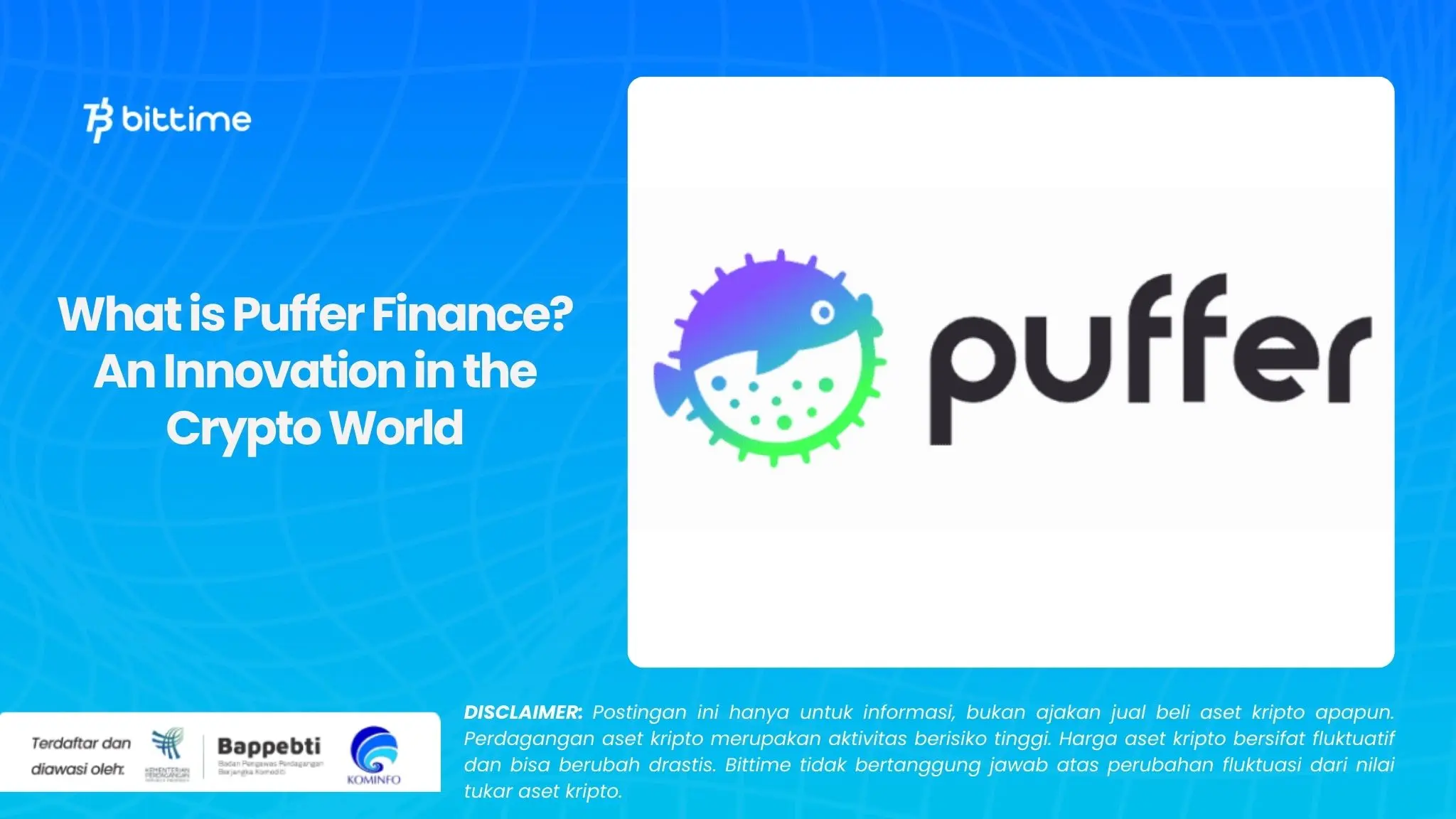What is Puffer Finance? An Innovation in the Crypto World
2024-09-09
Bittime - Puffer Finance offers the concept of restaking in the crypto world. This protocol offers various interesting features in it. However, like other crypto technologies, Puffer Finance also has its own challenges.
So, what is Puffer Finance? How does it work and what are the main features of this restaking protocol? Keep reading this article to find out more!
What is Puffer Finance?
Puffer Finance is an innovative platform that leverages the concept of restaking in the crypto world, especially on the Ethereum network. Through this approach, Ethereum stakers can optimize their assets in a more efficient way and generate more returns.
This concept brings a breath of fresh air to the blockchain ecosystem, allowing validators to not only secure the network, but also support new applications and layers on top of the Ethereum network.
Read also: In just 6 months, Catizen users have reached 34 million players
What is restaking and its purpose?
Restaking is a concept born from traditional staking where Ethereum owners can use their staked ETH on multiple platforms at once. This innovation is made possible by EigenLayer, which acts as a decentralized trust marketplace on top of the Ethereum blockchain.
Restaking aims to increase security and trust in the network by expanding the scope of staked assets to support more applications and additional layers developed on top of Ethereum.
With restaking, Ethereum staked by validators can be used to secure various decentralized applications (decentralized applications or dApps) without having to withdraw their ETH from initial staking.
The main goal is to expand the security of the Ethereum crypto economy, strengthen the stability of the ecosystem, and provide additional income potential for validators.
How Does Puffer Finance Work?
Puffer Finance works by using EigenLayer as a foundation. This platform operates the protocol restaking liquid which allows validators to utilize staked ETH for various activities without losing their status as validators.
By using concepts Native Liquid Restaking Token (nLRT), Puffer introduced pufETH, a token that is backed by native ETH and can be used in various DeFi applications while still earning staking returns.
One of its main features is the lowered threshold for becoming a validator. Whereas previously it took 32 ETH to become a validator on Ethereum, through Puffer, solo stakers only need 2 ETH, making the process more accessible and encouraging stronger decentralization.
Key Features of Puffer Finance
Puffer Finance offers a variety of features that appeal to the crypto community, including:
1. Native Liquid Restaking Token (nLRT): Puffer introduces pufETH, a token that uses real ETH as collateral, which provides not only regular staking returns, but also restaking returns via EigenLayer.
2. Low Entry Limits for Solo Stakers: With technology Secure-Signer, Puffer allows solo stakers to join the network for as little as 2 ETH, making it more inclusive.
3. Participation Without Permission (Permissionless): Anyone can join the platform without requiring approval from a central authority, opening up wider opportunities for validators from various backgrounds.
4. Technology Secure-Signer: This tool increases validator security by preventing errors that can lead to balance reduction (slashing) through secure messages.
5. Validator Tickets: Validators can earn additional profits through the sale of validator tickets, which provides incentives for them to participate in the network.
6. Various Returns: Puffer offers a variety of returns, from traditional PoS staking, restaking on EigenLayer, to Puffer Points, which opens up opportunities for stakers to get returns from protocols that collaborate with Puffer.
Read also: Reduce Transaction Fees, SunPump Collaborates with OKEx Wallet
Puffer Finance Challenge
Even though it offers various advantages, Puffer Finance also faces challenges. One of them is ensuring that network security is maintained even though validators are more easily accessible to new participants.
Technology like Secure-Signer It is very important to maintain validator integrity, but ongoing monitoring and improvement is still needed to keep the system running smoothly and securely.
Another challenge is competition with other protocols that also offer staking and restaking services. Puffer must be able to maintain its appeal by offering competitive returns and improving existing features to attract more validators and users.
Conclusion
Puffer Finance brings an innovative solution to the world of Ethereum staking and restaking by offering a more inclusive and friendly platform for solo validators.
With features like pufETH, low entry limits, and technology Secure-Signer, Puffer is able to change the staking landscape to be more open and secure. Although it still faces challenges, Puffer has the potential to become a key player in the growing Ethereum ecosystem.
This is a review of what Puffer Finance is, which we have summarized from various sources. Keep following the latest articles on Bittime to gain knowledge about other crypto technologies.
How to Buy Crypto on Bittime
You can buy and sell crypto assets in an easy and safe way via Bittime. Bittime is one of the best crypto applications in Indonesia which is officially registered with Bappebti.
To be able to buy crypto assets on Bittime, make sure you have registered and completed identity verification. Apart from that, also make sure that you have sufficient balance by depositing some funds into your wallet. For your information, the minimum purchase of assets on Bittime is IDR 10,000. After that, you can purchase crypto assets in the application.
Learn How to Buy Crypto on Bittime.
Monitor price chart movements of Bitcoin (BTC), Ethereum (ETH), Solana (SOL) and other cryptos to find out today's crypto market trends in real-time on Bittime.
Disclaimer: The views expressed belong exclusively to the author and do not reflect the views of this platform. This platform and its affiliates disclaim any responsibility for the accuracy or suitability of the information provided. It is for informational purposes only and not intended as financial or investment advice.






